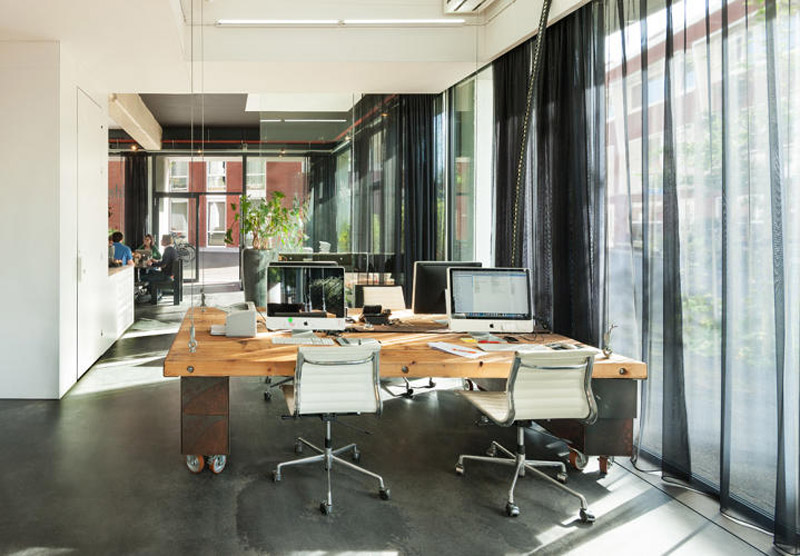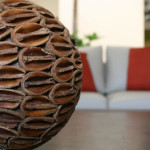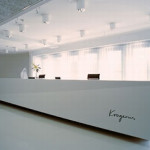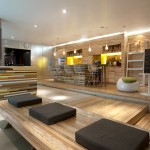If you are like me, after reading this post you’ll wish to move to Amsterdam and work at this design studio – or at least try to convince your boss to implement this at your office as well. Â What I am talking about? Â During the day, Amsterdam design studio Heldergroen looks like a typical workspace. Â But at 6 p.m., the office disappears – Â all of the desks suddenly lift up into the air, with computers and paperwork attached. Â The floor clears, thus making room for creative community uses and keeping staff from working too late.
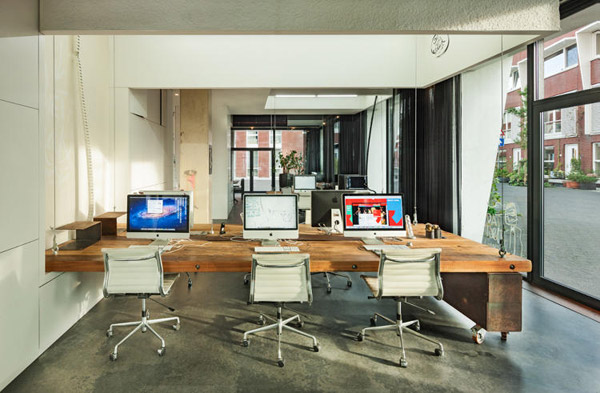
“We are able to pull the tables up into the ceiling and make the whole room into a dance floor, yoga studio, trend session, networking reception, or anything else you can think of–the floor is literally yours,” Â says Sander Veenendaal, creative director for Heldergroen, the company that uses the office during business hours.
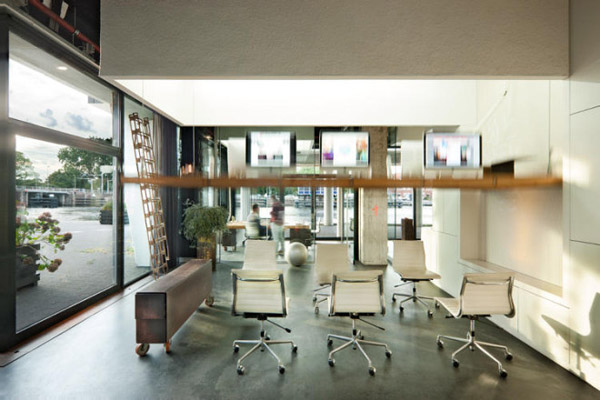
At nights and weekends, the firm offers the space to others for free.
“We believe that if you give something, in this case a room to do anything you like, you will eventually get something back,” Â Veenendaal explains.
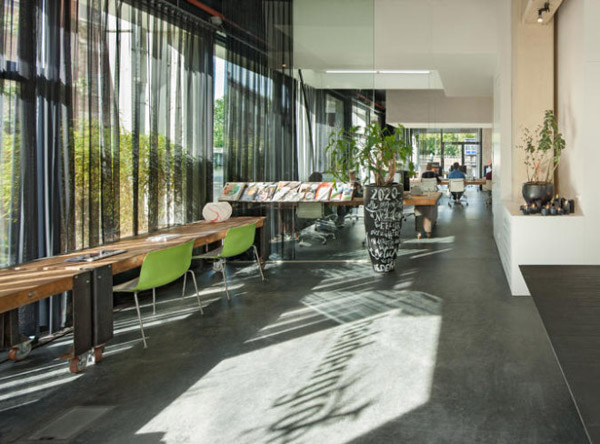
The large shared desks are attached to the ceiling with steel cables, and use a mechanism from large theater productions to lift everything up and down. Â During work hours, the desks balance on rolling cabinets to keep them at the correct height and steady. Â When the work day is over, the whole room can be cleared in a couple of minutes.
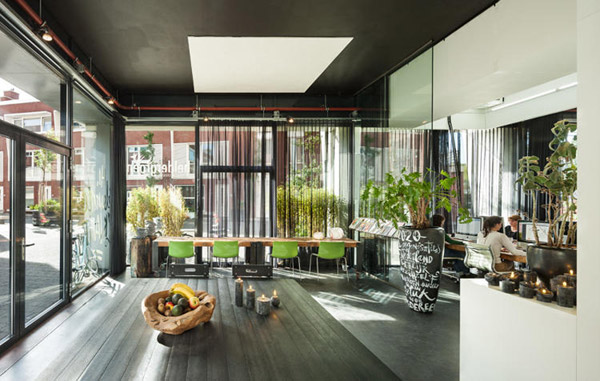
Unlike some other offices that are designed to tempt employees to stay and work longer, this design forces an automatic work-life balance. Â “We think that doing activities like this makes it easier for people to work here,” says Veenendaal. Â “You know when it is time to relax or do something else that inspires you.”
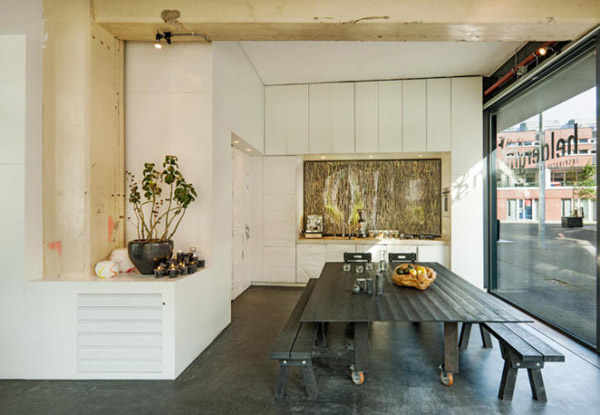
For the company, the space is also an unlikely form of marketing. Â “Heldergroen makes it possible to create a culture instead of a straightforward business,” Veenendaal explains. “Connecting people to your brand can only make it grow, and doing things that the culture likes makes it easier to make this connection.”
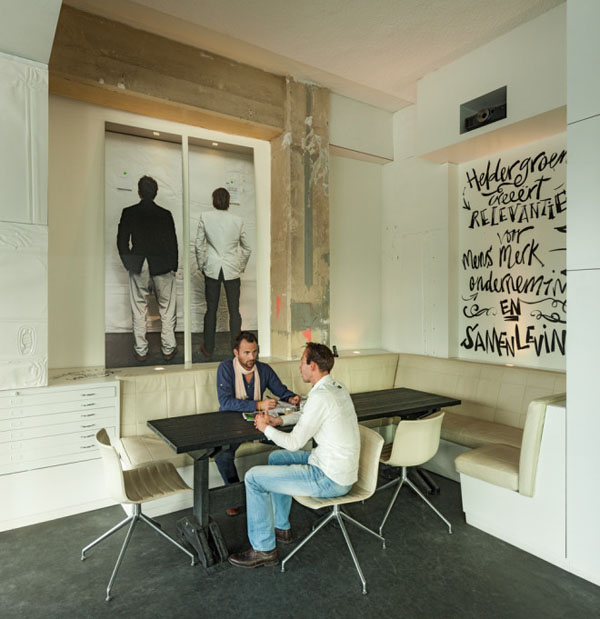
The office was also designed to be as sustainable as possible. Â Built in an abandoned century-old chocolate factory, all of the furniture is made from materials scavenged in the neighborhood. Â Cabinets are made from car doors flattened with a bulldozer, and the movable desks are made from old telephone poles.
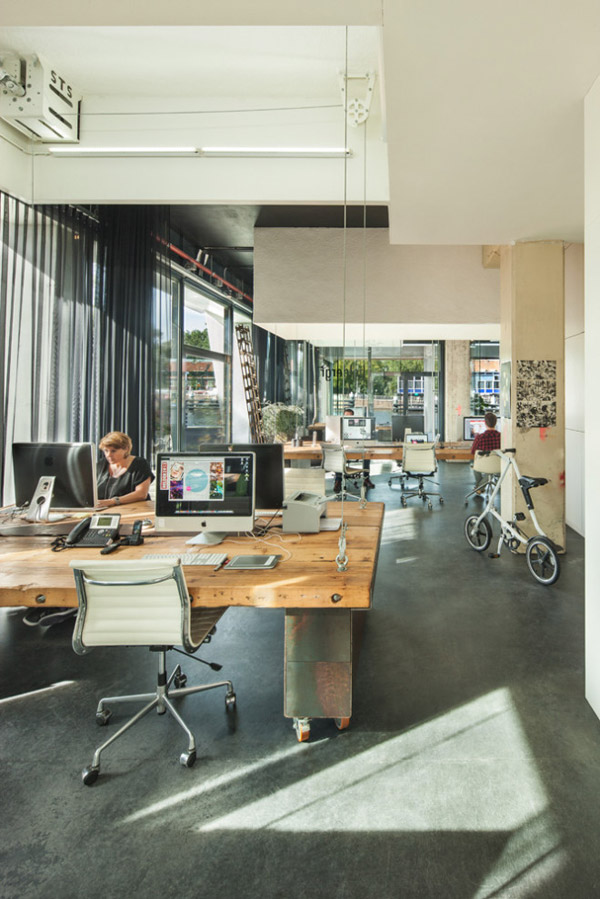
By making better use of existing space, offices like this might also be able to help slow some of the pace of new construction in cities, and the environmental costs that go along with that. Â Do offices really need to be empty half of every day?
Photos: via Heldergroen

